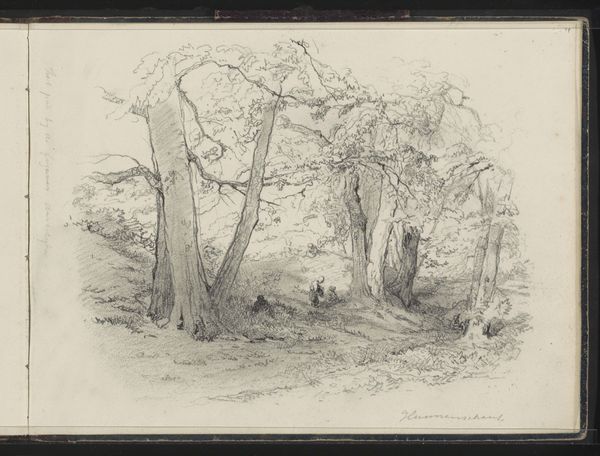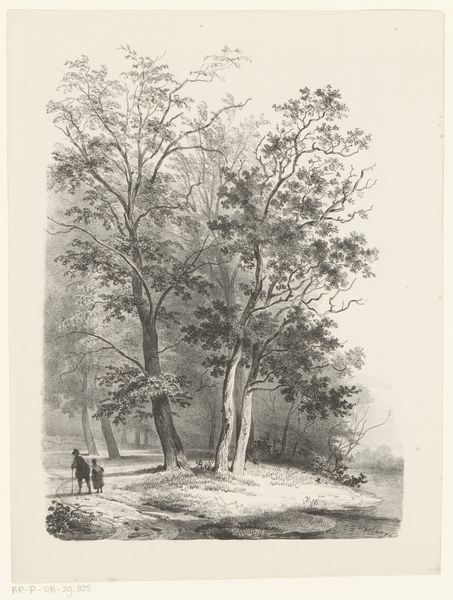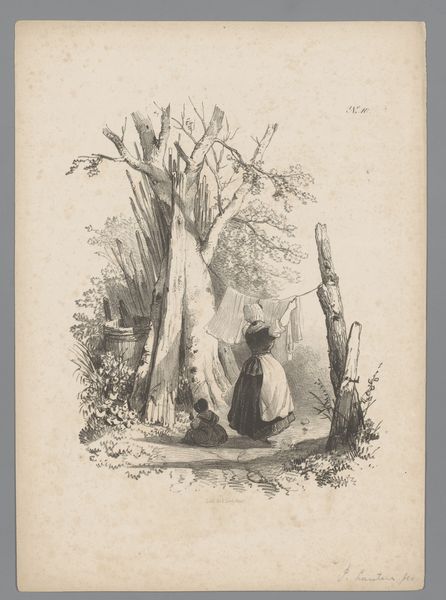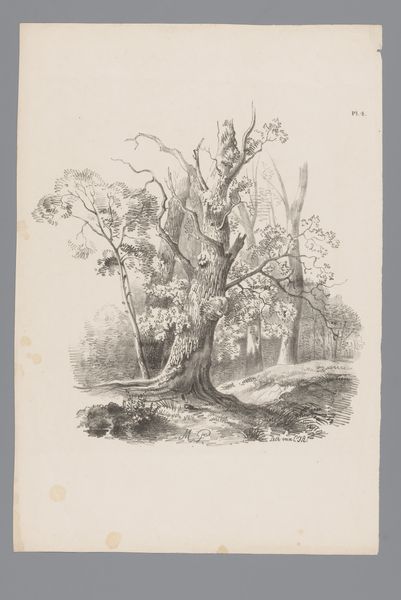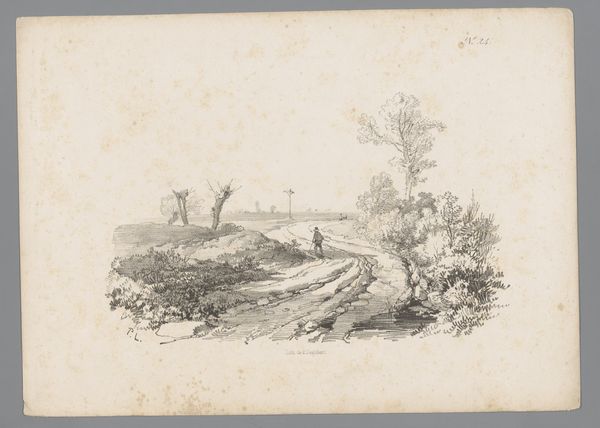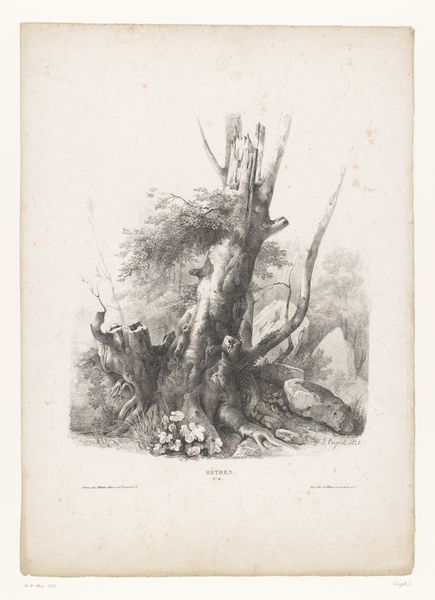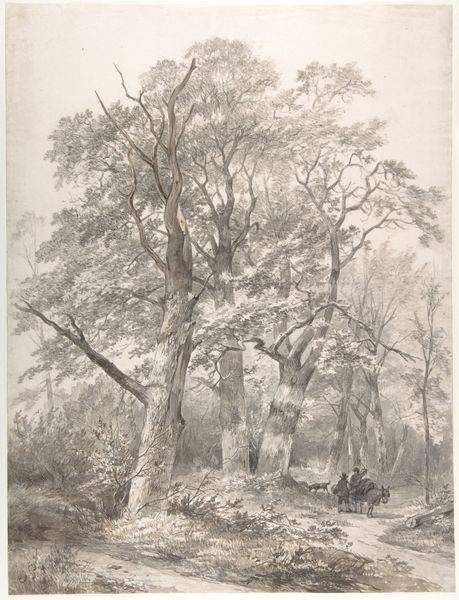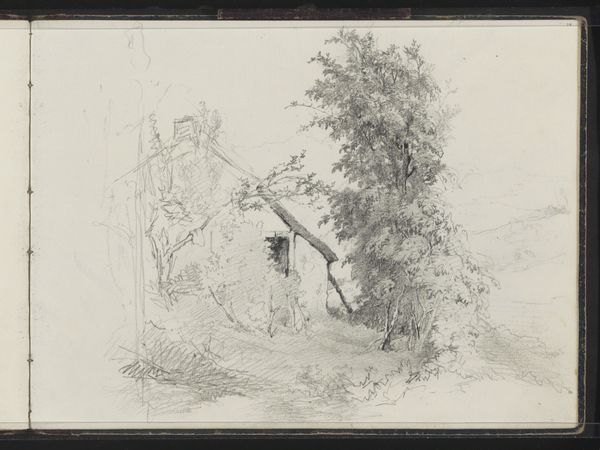
drawing, pencil
#
drawing
#
landscape
#
romanticism
#
pencil
Dimensions: height 230 mm, width 308 mm
Copyright: Rijks Museum: Open Domain
Curator: It feels… desolate, doesn't it? A quiet melancholy hangs over it, like a memory fading at the edges. Editor: Absolutely. This is Paulus Lauters' "Landscape with Tree Stumps," a drawing made in 1836. It’s currently held in the collection of the Rijksmuseum. What’s interesting here is to consider it as an example of Romanticism’s focus on the sublime in nature, especially how that concept was influenced by socio-political events like the rise of industrial capitalism. Curator: So you’re seeing the stumps, not as… decay or ruin as I do, but rather as symbols of resources violently extracted? It’s powerful stuff. Editor: I’d say both readings hold truth. The Romantic ideal frequently looked towards an imagined past, one often associated with pre-industrial life, so Lauters' choice of subject speaks to that cultural moment. It also offers an implicit commentary on ecological exploitation of the land during industrial growth, too. The fragility and rawness conveyed using humble materials like pencil further highlights the vulnerability of this scenery, no? Curator: Right. Lauters' restraint in the rendering lends this drawing an unexpected, almost palpable silence that rings throughout the work. It’s hard not to get a sense of how nature changes… How places become, or unbecome. I notice I have assigned a lot of 'human' terms to nature's ways. It gives pause. Editor: Precisely. It’s almost a mirror reflecting humanity's intervention, and relationship to it. But if we flip that around to thinking of nature on nature's terms: is that even possible for the human subject to truly 'see'? Curator: And you brought it all back around! From stumps of forgotten beauty, to active symbols... Thank you! Editor: And thank you for unveiling that original emotive spirit that permeates. We have brought these ideas back to life.
Comments
No comments
Be the first to comment and join the conversation on the ultimate creative platform.
